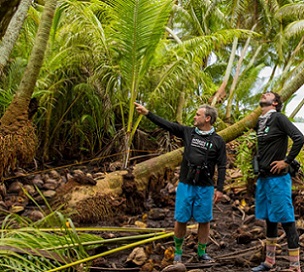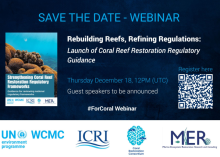
The slashing and poisoning is part of an unprecedented endeavor to rid this remote atoll of all but a few coconut palms (Cocos nucifera). The gangly tree is an icon of idyllic tropical islands, but also an aggressive invasive species that crowds out native plants and animals. By removing 99% of Palmyra’s millions of palms, biologists hope to create more room on the atoll’s three dozen islets for indigenous forests and seabirds, including the world’s second largest colony of red-footed boobies.









